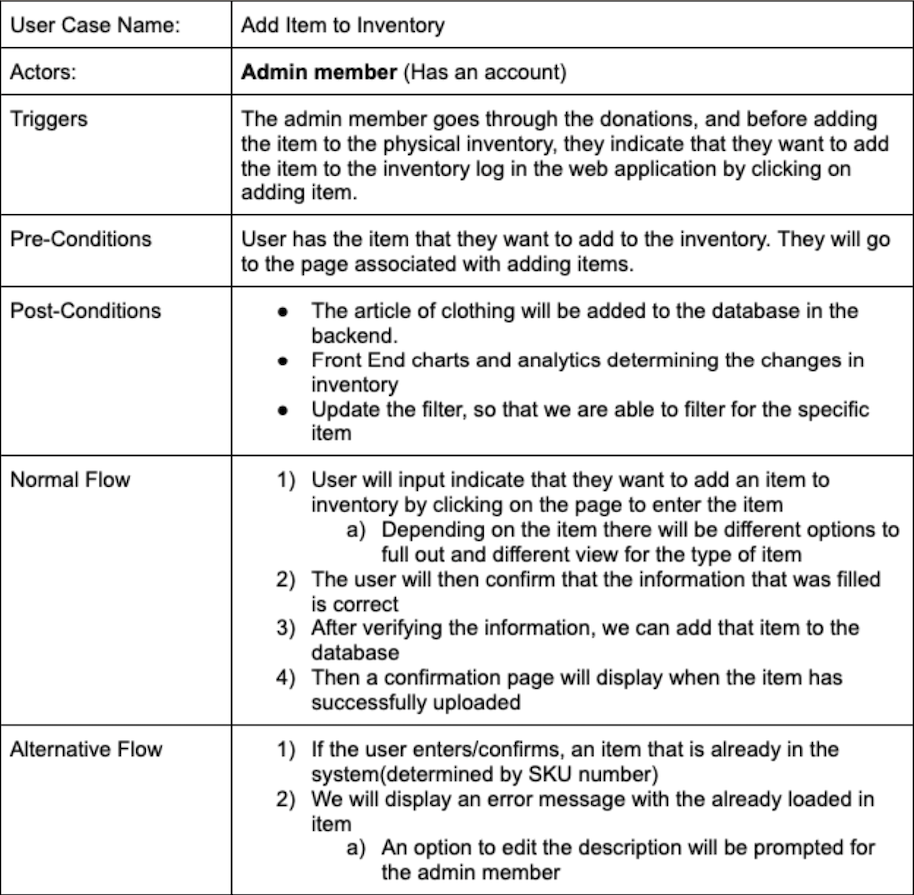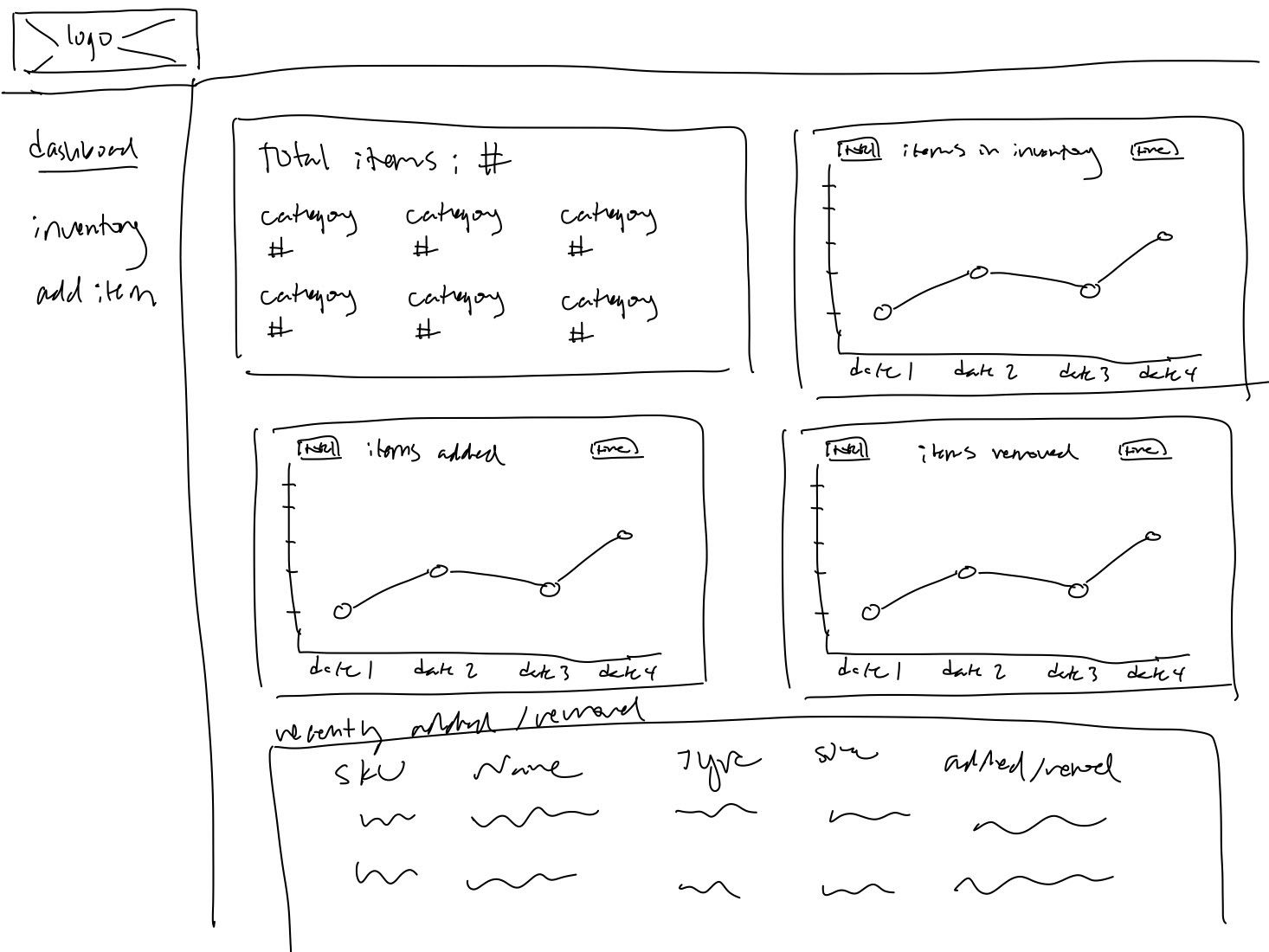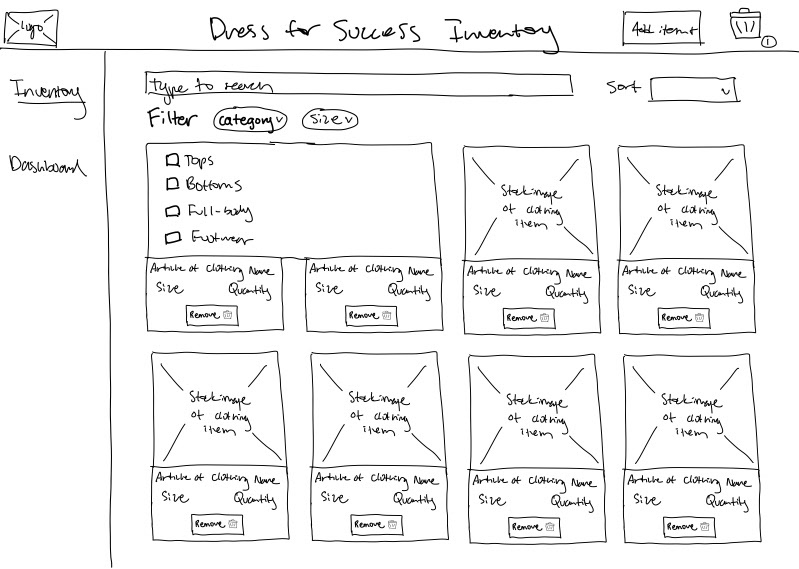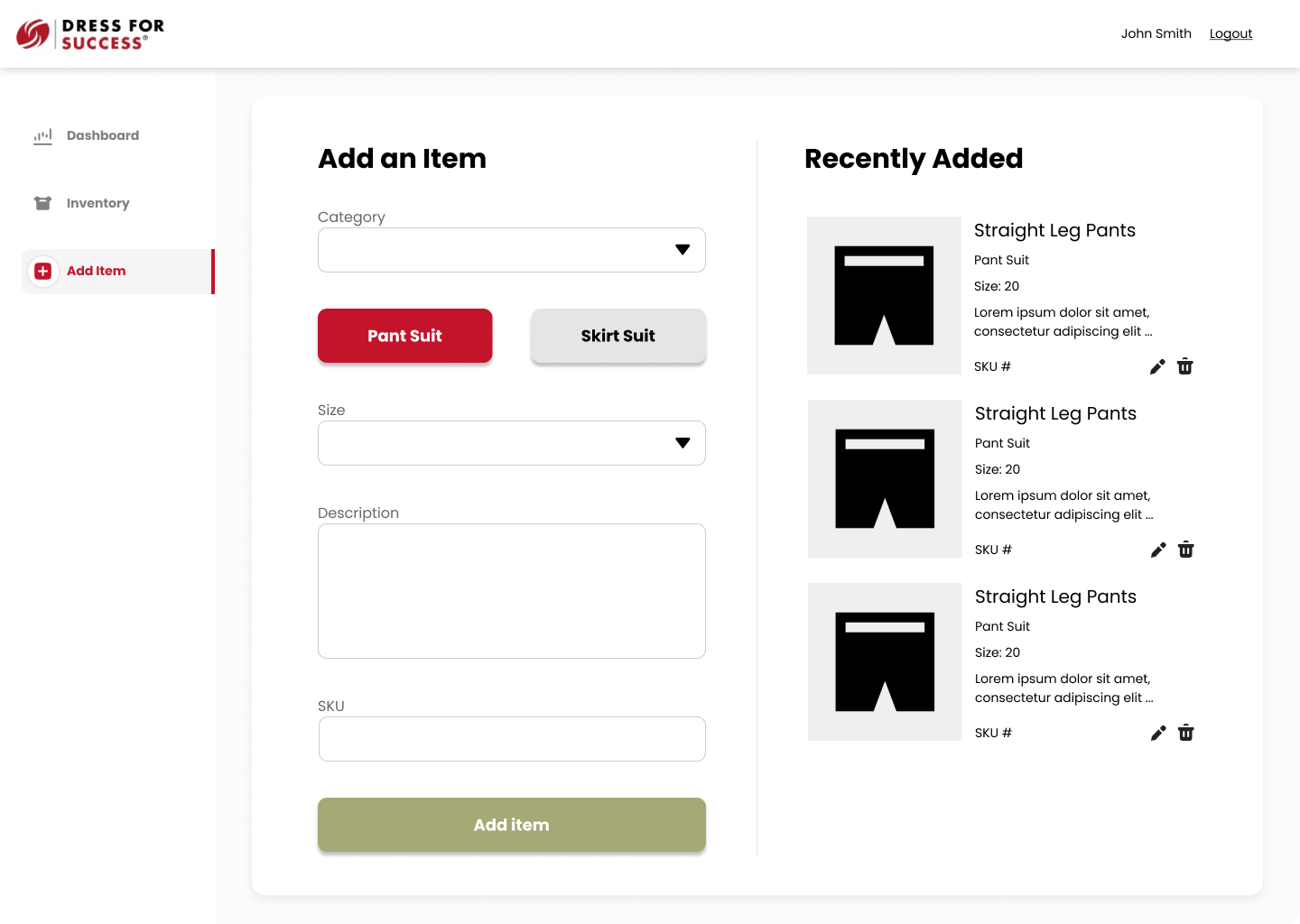Dress for Success
Roles
Designer, researcher
Designer, researcher
Methods
Visual design, wireframing, prototyping, user research, user analysis, client relations
Visual design, wireframing, prototyping, user research, user analysis, client relations
Tools
Figma
Figma
Background
Dress for Success is a global not-for-profit organization that empowers women to achieve economic independence by providing a network of support, professional attire and the development tools to help women thrive in work and in life. As a part of JumboCode, a student-led organization that creates software for non-profit organizations, I worked alongside a team of developers to create an admin-only web application that keeps track of Dress for Success’ overall inventory of clothing items.
App Features
The system displays a list of items categorized by quantity, size, and article of clothing. When a clothing item is entered, details such as color and SKU number are included. The quantity of an item decreases when it is taken out by the tracker and increases when more items are added. Users can input or search for items by SKU number and have the option to sort the list by quantity, size, or article of clothing. Additionally, the inventory can be filtered to show specific items, such as "5 medium shirts" or "4 small pants."
Tracker
The system provides detailed descriptions of items taken out, including the article of clothing, size, SKU number, and color. When an item is removed, a specific item identified by its SKU or other details is taken out, rather than simply decrementing the quantity of the entire category. The date on which the item was removed is also recorded.
Remove Items
Items can be recategorized as donation, sale, or damage. For donation, items given to clients are permanently removed from inventory, and the quantity is adjusted accordingly by inputting the SKU number. For sale, past-season items sold to clients are also permanently removed from inventory with the quantity decreasing and the SKU number being entered. For damage/remove, damaged items or those removed for other reasons are similarly deducted from inventory, with the SKU number input to complete the process.
Schema
Clothing items are categorized into distinct groups, each organized by size and type.
These categories include outerwear, cardigans/sweaters, jackets/blazers, suits, scrubs, tops, pants, dresses/skirts, innerwear, shoes, and accessories.
Use Cases
The following use cases were identified based on the app's intended common actions:
Adding items to the inventory, removing items from the inventory, editing items in the inventory, and filtering items in the inventory

Add item to inventory

Remove item from inventory

Edit item in inventory

Filter item from inventory
Wireframes

Dashboard Page

Inventory Page

Single Item Modal

Add Item Page
Initial Mockups
Following further client discussions and multiple iterations, I created some initial mockups.

Dashboard

Inventory

Single Item Modal

Add Item
Final Designs